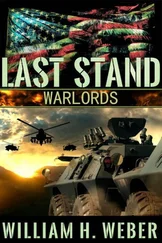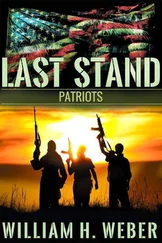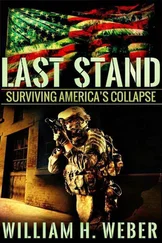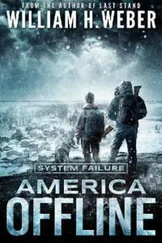“Is that where you’re going?” Emma asked, taking her hands off the lever and putting them on her hips. “To bring the boys home.” She grew still and held her breath.
“I can’t say right now, honey. I hope you understand that. Remember how I used to tell you about the last world war and how the British had that expression, ‘Loose lips sink ships.’ I don’t want to get your hopes up, but I also don’t wanna sink any ships. You understand, I hope.”
“Yup,” she replied with obvious disappointment and went right back to work.
Feeling her pain, he leaned in, kissed her forehead and headed for the rendezvous point.
He arrived at the stables a few moments later and found the horses already saddled and loaded with gear. The four soldiers on the IED team were off to one side going over tips on wiring and planting bombs. Their brash young leader, Taylor, was talking about his time in Iraq and how insurgents began by digging holes in the ground to plant IEDs before graduating to hiding explosives in donkey carts and road kill.
Nearby the eleven men who would accompany him on the raid to destroy the Chinese truck depot were assembled. Moss stood before them, going over the plan.
John called them together for a last few words. As they closed in, Taylor raised his hand.
“What is it?” John asked.
“I noticed the horses the IED team is taking are loaded with wooden planks and shovels. I’m just wondering if we’re gonna be digging tunnels like the Viet Cong?”
This elicited laughter from some of the men.
Humor aside, the idea had occurred to John, but the sheer immensity of the country made the use of tunnels impractical. Only weeks before, the Chinese forces had been holed up on the crest of the Mississippi river. Today their front lines were stretched along the Appalachian mountain chain. In the coming days or weeks it was impossible to tell where they’d be. Would they be washing their feet in the Atlantic or retreating in haste toward the Rockies?
John let Moss take the floor to explain how the IED team was to begin creating camouflaged weapons caches at key locations. Whatever ammunition and weapons they captured on their raids would be deposited inside these storage areas. He made sure they understood they weren’t simply digging a hole and throwing guns and ammo inside. The ammunition needed to be protected from the elements and kept within certain temperatures.
“Once you’ve dug the hole,” Moss told them, “fill the bottom with a layer of gravel or rocks, then about fifteen inches of sand. This will help drain any water away that seeps into the cache. On top of the sand place logs and then the wooden floorboards which will hold the ammo crates. Keep them spaced apart to allow air circulation. For the roof, you can use leftover boards or several branches. Pile leaves over that and dig a drainage ditch around the cache to collect runoff. If you can find some PVC pipe and endcaps that are large enough, you can even store a limited amount of ammunition in there.”
“I’ve also had Devon make each team some of these,” John said, holding up a small, sharpened triangle.
“Caltrops,” Taylor exclaimed, unable to hide his exuberance.
“That’s right. They’re also pretty simple to make, using three-inch nails, filing off the end, bending them at a ninety-degree angle and then welding them together. They can be tossed across a roadway to puncture tires during an ambush or used to create a slow leak. Be creative, but above all, don’t hesitate to use the tools we’ve given you if the situation gets sticky. And remember, the most successful missions are ones where the enemy never knows you were there.”
“Until the place goes kablooey, that is,” Moss said, his hands forming an explosion.
John stood. “All right, time to mount up, gentlemen. And follow the paths through the Chinese lines we’ve outlined.”
“Hold on,” Taylor squawked. “We can’t just ride off, not without a name.”
Moss, Reese and Devon turned to John.
“He’s got a point,” Reese said, flipping out a cigarette and clamping the filter between his front teeth. “You got anything off the top of your head, Colonel?”
John drew a blank. Finding a name for their unit hadn’t been high on his priority list, but he could see how important it was to the men.
An image of Teddy Roosevelt flashed before him. Not many people knew the twenty-sixth president had led a cavalry regiment during the Spanish-American War. They’d been called the Rough Riders and to John, given they were about to spend the next few days in the saddle, the name seemed strangely appropriate.
The men cheered upon hearing it and laughed at the reasoning behind John’s suggestion. And with that they split into two groups, none of them entirely sure how many would ever make it back.
John’s immediate team was quiet as they cut through the dense forest trails on their way past the ring of Chinese troops encircling Oneida. Calling it a ring wasn’t entirely accurate. The enemy had choked off every roadway into town. Creating an actual ring of soldiers would have required a deployment of thousands. It was the American armor they were really trying to keep in check.
Whenever possible open fields were to be avoided. Cover was their friend and a map of the Cumberland trail which passed through the wooded areas close to their objective was as invaluable as the weapons they carried. Before long, these maps would no longer be needed. These back trails in and out of Oneida would be seared into his men’s memories.
Two days into their journey, they hadn’t seen much activity. The roads, whenever they came into view, were largely empty save for the rare military convoys. It wasn’t the hustle and bustle John had expected. In a way, it reminded him of how some fellow soldiers had described Afghanistan. The land was spread out and you could go for days sometimes without seeing either friend or foe.
In the evenings they made camp, avoiding a fire whenever they could. Many of the men ate MREs or canned tuna. Water from streams as well as carrots and hay kept the horses fed and happy.
It wasn’t until the third day, when John’s backside had gone from sore to numb, that they came upon a strange sight. Through a loose screen of trees, they spotted the edges of a neighboring town. Stretching up past the roofs of the buildings was a church steeple.
“You see what I’m seeing?” Reese asked, pulling up beside him.
John lifted the binoculars and adjusted the focus. “Looks like a church to me,” he replied.
“Look where the cross used to be.”
It had been knocked off.
“It isn’t the first time I noticed it either,” Reese told him. “I know those Chinese aren’t big fans of worship. What little they do tolerate is usually so mixed with Communist politics, a bunch of the Catholic groups in their own country have gone underground. I suspect the same is starting to happen here.”
“As painful as it is to see,” John said, “we need to pick our battles.”
So far, crossing the Mississippi had been the most dangerous part of the operation. The concern of being spotted had meant using the old Caruthersville railroad bridge near Dyersburg.
It was later that day that they arrived at their objective. Set on the outskirts of Paragould, Arkansas, the truck depot was huge and situated next to a rail line. It appeared the Chinese were shipping in a mishmash of vehicles via older steam locomotives. John guessed there were well over a hundred trucks within the fenced enclosure. A handful of guards on foot stalked the perimeter. They were so far behind enemy lines, if anything went wrong, it would be a long and dangerous trek home.
Читать дальше












